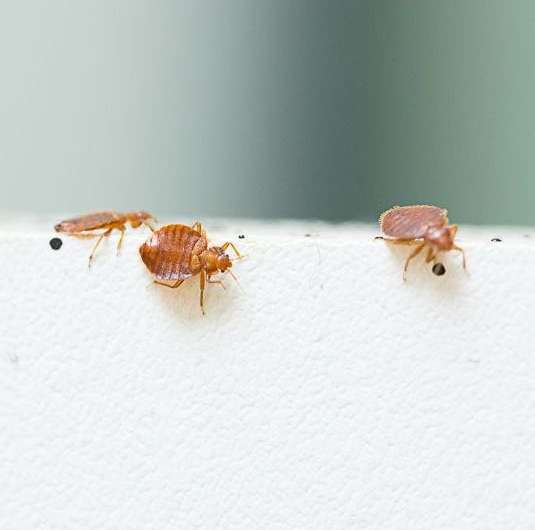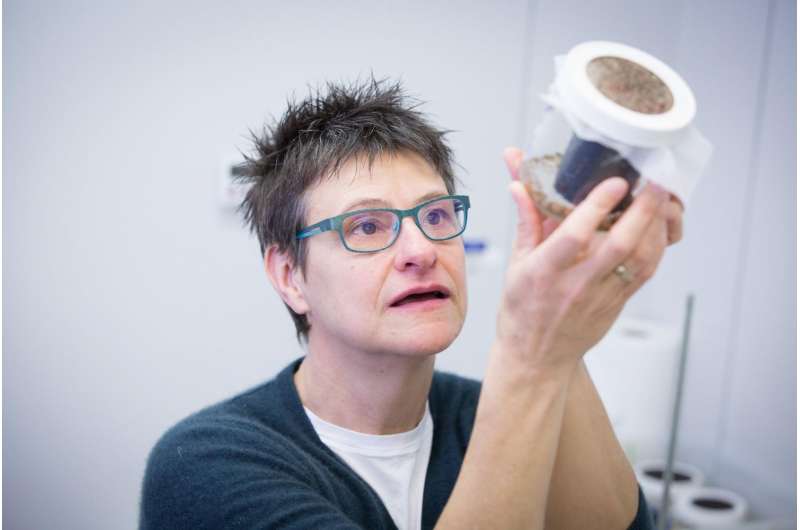Biopesticide could defeat insecticide resistance in bedbugs

A fungal biopesticide that shows promise for the control of bed bugs is highly effective even against bed-bug populations that are insecticide resistant, according to research conducted by scientists at Penn State and North Carolina State universities.
The study suggests that Aprehend, a mycoinsecticide developed at Penn State, likely will provide an important new tool for managing bed-bug infestations, which have surged in recent years.
"Bed bugs were all but eradicated from the United States and other industrialized nations after World War II, likely due to the use of DDT and other broad-spectrum insecticides," said study co-author Nina Jenkins, senior research associate in entomology, College of Agricultural Sciences, Penn State. "But in the last few decades, they have re-emerged globally as an important public-health pest."
The researchers noted that pyrethroid insecticides are a mainstay of bed bug control, but there is compelling evidence that many bed-bug populations have developed resistance. In addition, this resistance may lead to cross-resistance to other classes of insecticides.
"In fact, high levels of resistance to four neonicotinoids recently were detected in field populations of bed bugs," Jenkins said.
Alternative control measures vary in complexity, cost and efficacy, explained the researchers, who reported their results online in Pesticide Management Science. For instance, the use of high temperatures to kill bed bugs can be effective and has increased in popularity in the last decade. But the cost can be prohibitive, ranging from $500 to $1,000 per room. Other available methods often do not provide satisfactory control.

The need for a solution to the resurgence of this pest led Jenkins and colleagues at Penn State to look at entomopathogenic fungi, which have demonstrated effectiveness against other public-health pests, such as malaria vectors, cockroaches and house flies. Researchers also have shown fungal pathogens to be effective against insecticide-resistant mosquitoes.
The result was the development of Aprehend, a patent-pending compound based on Beauveria bassiana, a natural fungus that causes disease in insects. Previous studies have shown that the formulation can be applied as a long-lasting barrier treatment. Bed bugs that cross the barrier acquire fungal spores and go on to spread these among insects that remain in their harborages, resulting in greater than 95 percent mortality within a week.
"The goal of this study was to evaluate the efficacy of this product on an insecticide-susceptible lab strain of bed bug, and compare that to its effect on three field-collected strains known to be resistant to insecticides," Jenkins said. "We also compared mortality of these four bed-bug strains after exposure to either a commercial pyrethroid insecticide or Aprehend."
To perform the experiments, researchers applied the fungal-based Aprehend to a quilt fabric commonly used by manufacturers of bed box springs. They similarly applied a deltamethrin-based, commercial insecticide at both high and low concentrations to the same type of fabric. Treated fabric was allowed to dry before bed bugs briefly were exposed to it. The researchers exposed a control group of bed bugs to fabric sprayed with water.
The results demonstrated that Aprehend was equally effective against all four strains of bed bug—including those with insecticide resistance—achieving mortality rates from 95.5 percent to 99 percent within 14 days.

The nonresistant bed bugs exposed to fabric treated with chemical insecticide sustained similarly high mortality rates. However, only 16 percent to 40 percent mortality was reached among the field-collected, resistant strains of bed bugs 14 days after exposure.
"In two of these resistant strains, survivorship after insecticide treatment was not significantly different from the control group," Jenkins said.
Perhaps the most important finding of the study, according to the researchers, is that bed-bug resistance to pyrethroid insecticides does not confer cross-resistance to infection by B. bassiana.
"B. bassiana has a unique mode of action with no known resistance or cross-resistance in bed bugs, and it is highly effective on pyrethroid-resistant bed bugs, making it an excellent candidate for use in bed-bug management," said Jenkins, who has formed a company, ConidioTec, to commercialize Aprehend. "In addition, the tendency of bed bugs to aggregate is likely to increase the dissemination of the fungus within the harborage and enhance overall population control."
Provided by Pennsylvania State University




















